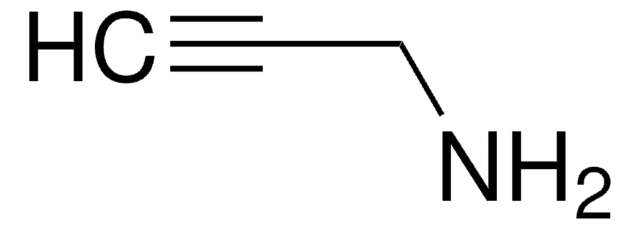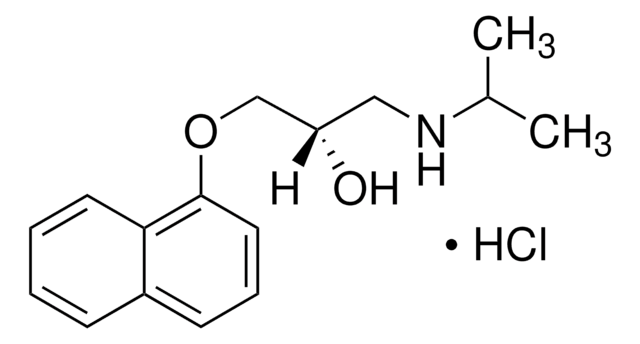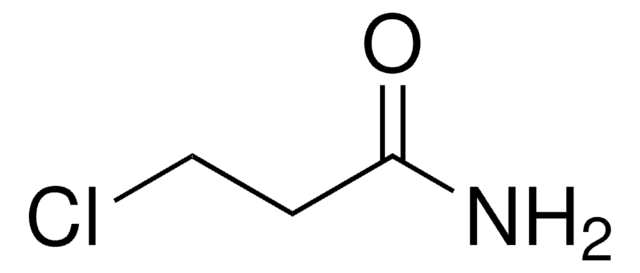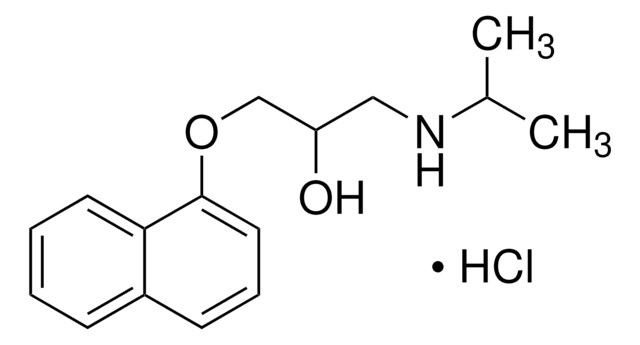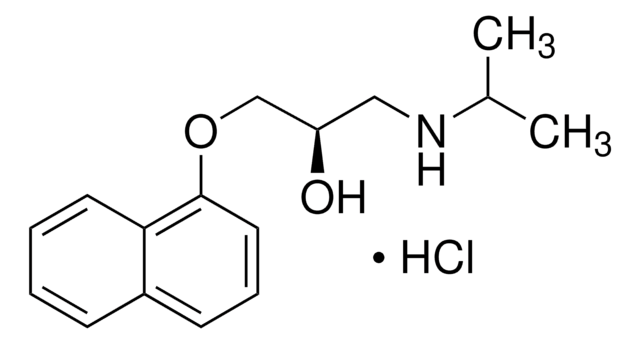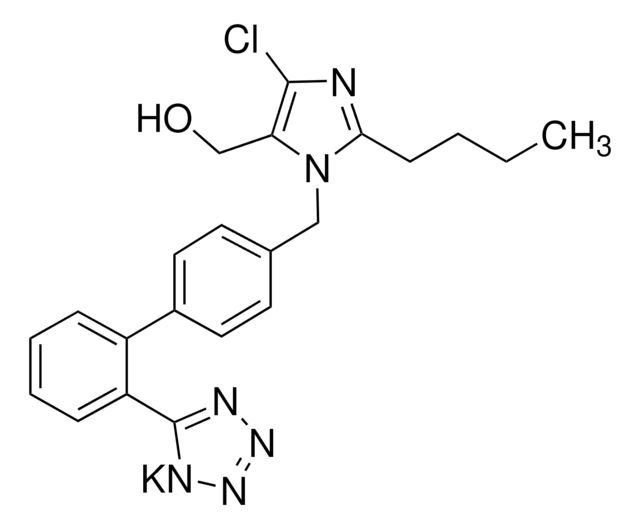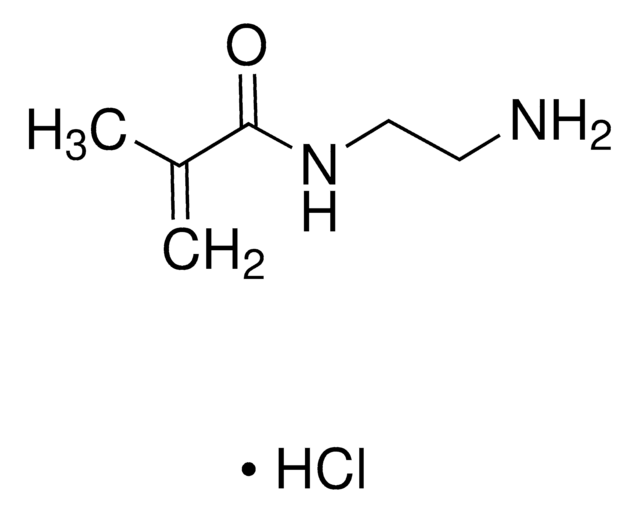00881
(±)-4-Hydroxypropranolol hydrochloride
analytical standard
Sinonimo/i:
1-[(4-Hydroxy-1-naphthyl)oxy]-3-(isopropylamino)- 2-propanol hydrochloride, 4′-Hydroxypropranolol hydrochloride, 4-{2-Hydroxy-3-[(1-methylethyl)amino]propoxy}-1-naphthalenol hydrochloride
About This Item
Prodotti consigliati
Grado
analytical standard
Livello qualitativo
Saggio
≥98.5% (AT)
≥98.5% (HPLC)
Durata
limited shelf life, expiry date on the label
tecniche
HPLC: suitable
gas chromatography (GC): suitable
applicazioni
forensics and toxicology
pharmaceutical (small molecule)
Formato
neat
Temperatura di conservazione
2-8°C
Stringa SMILE
CC(C)NCC(O)COC1=CC=C(O)C2=CC=CC=C21.Cl
InChI
1S/C16H21NO3.ClH/c1-11(2)17-9-12(18)10-20-16-8-7-15(19)13-5-3-4-6-14(13)16;/h3-8,11-12,17-19H,9-10H2,1-2H3;1H
ROUJENUXWIFONU-UHFFFAOYSA-N
Prodotti consigliati
Codice della classe di stoccaggio
11 - Combustible Solids
Classe di pericolosità dell'acqua (WGK)
WGK 3
Punto d’infiammabilità (°F)
Not applicable
Punto d’infiammabilità (°C)
Not applicable
Scegli una delle versioni più recenti:
Certificati d'analisi (COA)
Non trovi la versione di tuo interesse?
Se hai bisogno di una versione specifica, puoi cercare il certificato tramite il numero di lotto.
Possiedi già questo prodotto?
I documenti relativi ai prodotti acquistati recentemente sono disponibili nell’Archivio dei documenti.
Il team dei nostri ricercatori vanta grande esperienza in tutte le aree della ricerca quali Life Science, scienza dei materiali, sintesi chimica, cromatografia, discipline analitiche, ecc..
Contatta l'Assistenza Tecnica.